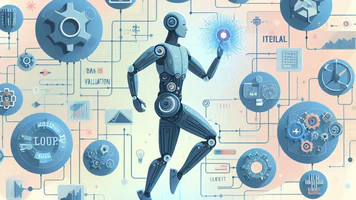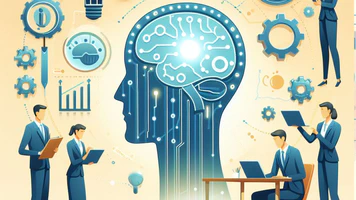
- By Justin Riddiough
- December 7, 2023
Think of your AI model as a complex machine with countless knobs and levers. Hyperparameter optimization is like finding the perfect settings for each knob to maximize your model’s performance.
- Grid Search: Imagine trying every single combination of knob settings on your machine. This systematic approach, while thorough, can be time-consuming for models with many hyperparameters.
- Random Search: Instead of trying every combination, what if you randomly sampled different settings and focused on promising areas? This can be faster for finding good settings, especially for large search spaces.
- Bayesian Optimization: Like a skilled engineer, this technique uses past results to predict promising settings, allowing you to explore the “search space” more efficiently and discover the optimal configuration.
Model Architecture Optimization: Reshaping for Greater Accuracy
Sometimes, simply tweaking the knobs isn’t enough. After evaluating your model’s performance, you might identify weaknesses in its architecture itself. This is where model architecture optimization comes in.
- Pruning the Unnecessary: Imagine removing unnecessary parts from your machine to improve its efficiency. Model pruning helps you eliminate redundant connections or parts of the model that contribute little to performance, making it leaner and faster.
- Exploring New Architectures: What if you could completely redesign your machine for better performance? Model architecture optimization allows you to experiment with different architectures, potentially finding one that better suits your specific problem and data.
- Ensemble Learning: Instead of relying on a single model, what if you combined the strengths of multiple models? Ensemble learning involves creating a “team” of models where each one contributes its unique strengths, leading to more robust and accurate predictions.
Transfer Learning: Building on Existing Knowledge
Imagine learning a new skill, like playing a piano. Would you start from scratch, or would you benefit from learning from an experienced pianist? Transfer learning is similar.
- Leveraging Expertise: Imagine having a pre-trained model that has already learned valuable knowledge from a similar task. Transfer learning allows you to leverage this knowledge, accelerating your model’s training and improving its performance.
- Faster Progress: Instead of starting from scratch, you can “piggyback” on the existing knowledge of a pre-trained model, significantly reducing training time and resources.
- Improved Performance: By leveraging the pre-trained model’s expertise, your own model can achieve higher accuracy and better performance on your specific task.
Fine-tuning and optimization are essential steps for unlocking your model’s full potential.** By employing these techniques, you can refine its performance, address identified weaknesses, and leverage existing knowledge to achieve impressive results. Remember, the journey to creating a truly exceptional AI model is a continuous process of learning, refining, and optimizing. So, embrace experimentation, learn from your results, and continually strive to improve your models for optimal performance.


